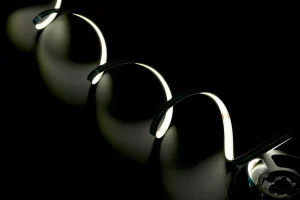How safe are high voltage led strip lights? This is important because high voltage LED strips operate close to 110V or 220V, which is far from the low-voltage one (usually running at 12 V and 24 V). The higher voltage will be kept away from users with the necessary precautions required by this kind of motif especially in areas exposed to moisture or public access.
Proper insulation and protection One of the most important points to consider. Their high voltage LED strips need to be well insulated or serious electrical emergencies can occur when they come in contact with water or are handled improperly. IP65 and above for dust and water resistance are available in many of these high voltage strips. IP65 or greater is a must for external mounting or moist environments to prevent the potential electrical shorts, wear and accidental shocks. Examples include using IP-rated enclosures and connectors for landscape lighting or exterior building outlines for added protection from environmental exposure.
The safety of high voltage LED strips is related to heat dissipation Because high voltage systems can generate more heat compared to low-voltage equivalents, the most appropriate action is either using decent heat sinks or mounting it onto thermally conductive materials. Industry reports show that high voltage LEDs require excessive heat, and can decrease their life expectancy by 30% or more, leading to overheating danger. So good thermal management is a weapon you have in hand to make your products work for longer and decrease the risks of heat build-up associated safety hazards.
Another key factor is electrical overloading. Trims of high voltage attached to a different power source or circuit is less likely to flux, which in turn causes the appliance to trip. For high voltage LEDs, be sure to use circuit breakers and surge protectors — this combination will prevent accidental power surges from damaging your lights. For example, commercial settings with big LED setups have seen surge protectors reduce fire risks related to electrical damage by about 40% Certified professionals properly plan and install circuits to help reduce these risks even more.

A decent infusion of glue is important to keep the double tape from peeling off, particularly in social or high-sway regions that may come into contact with the LED strip. With exposed wiring or loose strips an inadvertent touch can cause electric shock. This is why high voltage LED strips are installed with UL-listed components and connectors This comprehensive safety certification assures both people installing the system and those who use it that it has been built to strict safety requirements.
Another factor to be mindful of here is regular inspection and servicing. Furthermore, in comparison to low-voltage systems, the high voltage systems may need checks more commonly. But regular inspections should ensure that the insulation is still in place, all connectors are firmly attached and that water, dust or other debris has not intruded into the casing. Regular maintenance in the form of electrical safety inspections is recommended every 3-6 months to catch changes due to wear and tear or other potential hazards before they become immediate threats.
High Voltage LED Strip Comes with these Safety Protocols: From Insulation and Heat Management to Certified Components a Regular Inspection Supplemented with these protections, the high voltage LED systems have developed brighter, dependable and safe lighting solutions for different applications.